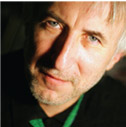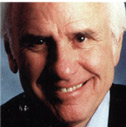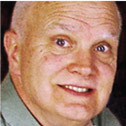Biographies
 Miroslaw Rogala
Miroslaw Rogala
Miroslaw Rogala is acclaimed as one of the most important digital media artists in the world. Chicago-based Miroslaw Rogala is most famous for his interactive installations and theater pieces. His work has been praised by the Chicago Tribune as “an exhilarating interweaving of video, performance, and numerous other media.”
The Polish-born artist has exhibited work all over the world, and was the subject of a full career retrospective at the Warsaw Museum of Contemporary Art in 2001. Writing in the catalogue for the show, art critic Elaine King called Rogala “a techno-poet of time, place, self.”
Born in 1954, Rogala studied music in Krakow before getting an MFA in painting at Krakow’s Academy of Fine Arts. He came to the United States in 1981, where he earned an MFA from the Chicago Art Institute. He was later to receive a Ph.D. from the University of Wales, with a dissertation on interactive public art.
At Chicago’s Goodman Theater, Rogala presented Nature Is Leaving Us (1989), a music theater piece that featured a video wall of 48 television monitors. Among his installations is Lovers Leap (1995), a two-screen project in which the viewer, placed between the screens, can change through physical movements and gestures the images on the screens. Electronic Garden/NatuRealization was installed in 1996 in Chicago’s Washington Square Park, and Divided We Stand, described as an “interactive media symphony” followed in 1997 at the Chicago Museum for Contemporary Art.
Rogala’s most recent work has involved an ongoing engagement with landscape and still life images modified through the use of Ford Oxaal computer software MEV/Minds-Eye-View. Transformed Garden puts into book format images that appear in his still in-progress single-channel video Transformed Landscape: Fruits and Vegetables, and will be incorporated into an interactive website www.transformedgarden.com.
He is currently preparing, in association with the National Taiwan Museum of Fine Arts, a proposal and libretto for a multimedia interactive opera, DEL+CTRL+ALT.
A frequent collaborator with other artists, Rogala has worked with dancer Merce Cunningham, filmmaker and installation artist Carolee Schneemann, Chicago figurative artist Ed Paschke, and theater director Byrne Piven. Rogala’s collaboration with Piven, a video version of the witches’ scenes used in a 1989 production of Macbeth, has circulated widely in video form and is shown in schools all over the United States.
Recent surveys of multimedia art have featured Rogala prominently. He appears in Edward A. Shanken’s Art and Electronic Media (London and New York: Phaidon Press, 2009) and Robert Russett’s Hyperanimation: Digital Images and Virtual Worlds (New Barnet, UK: John Libbey, 2009).
Rogala has been chair of the Department of Computer Graphics and Intereactive Media, director of the PIMA/Integrated Media Arts Institute at Brooklyn College of the City University of New York, and has taught at Carnegie Mellon University, the Art Institute of Chicago, and Renssellaer Polytechnic Institute. He is currently directs the Digital Arts Center for Knowledge Systems Institute in Chicago.
 Jim Rohn
Jim Rohn
Jim Rohn has achieved great personal and financial success not only as a marketer but as a popular, down-to-earth “business philosopher.”Having become a millionaire by the age of 31, Rohn went on to become a widely celebrated public speaker by vividly describing his rise to success and in coaching others to do the same. His two most popular seminars have been The Challenge to Succeed and The Making of a Leader.
A firm believer in personal growth, Rohn is famous for having said, “Of all the things that can have an effect on your future, I believe personal growth is the greatest. We can talk about sales growth, profit growth, asset growth, but all of this probably will not happen without personal growth.”
Among Rohn’s most successful books are The Seasons of Life (Jim Rohn International, 1981), The Seven Strategies for Wealth and Happiness (Three Rivers Press, 1985) and The Five Major Pieces to the Life Puzzle (Jim Rohn International, 1991).
Jeffrey Gitomer, writing in The Business Journal—Milwaukee and describing hearing Rohn speak as a “life-changing experience,” has said: “He doesn’t just tell you to ‘get out of your comfort zone.’ Rohn challenges his audience to take up residence there.”
 George Lellis
George Lellis
George Lellis is a Professor of Communication at Coker College in Hartsville, South Carolina. He is author of Bertolt Brecht, Cahiers du Cinema, and Contemporary Film Theory (UMI Research Press, 1982), and coauthor, with George Wead, of The Film Career of Buster Keaton (G.K. Hall, 1978) and Film: Form and Function (Houghton Mifflin, 1982).
His most recent book, Volker Schlondorff’s Cinema: Adaptation, Politics, and the “Movie-Appropriate” (Southern Illinois University Press, 2002), cowritten with Hans-Bernhard Moeller, is due to be published in an updated German translation in 2010. He has written several articles on the work of Miroslaw Rogala, and is currently working with Rogala on the libretto for an interactive multi-media opera entitled DEL+CTRL+ALT.

